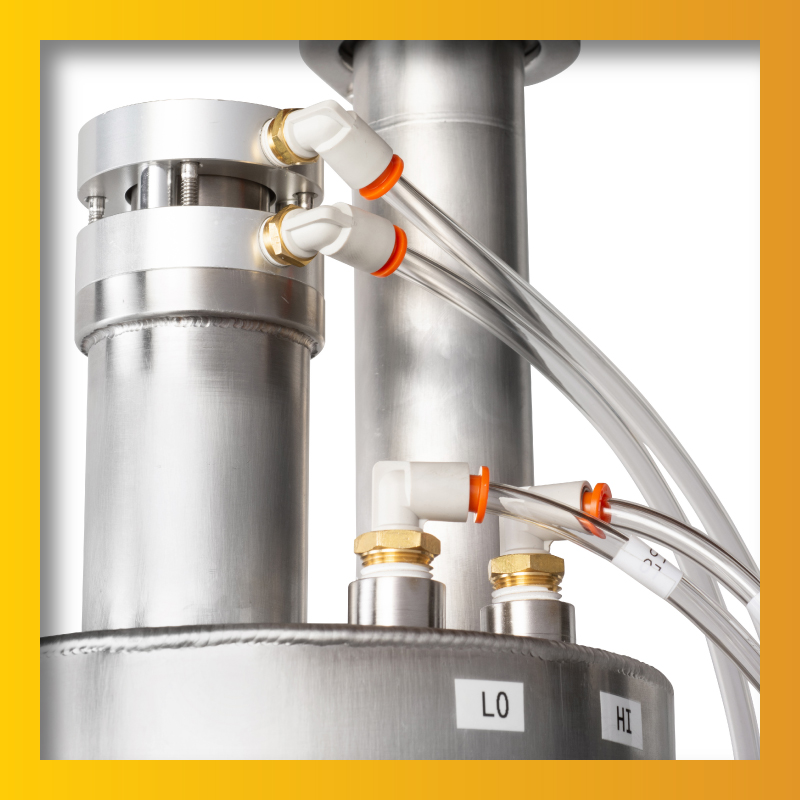Liquid nitrogen dosing systems are commonly found in bottling facilities where non-carbonated beverages are made (water, juices, teas, etc.). It is becoming ever more important to use dosing systems to pressurize bottles; giving them strength for stacking.
Over the past 20 years, beverage makers have reduced the weight of bottles to reduce costs and environmental impact. The most common material used for beverage bottles is Polyethylene terephthalate; commonly called PET. The rising cost of polymers and the impact that plastic bottles have on the environment has led most beverage producers to “Light-weight” bottles; reducing the weight of PET polymer used to produce bottles. This results in thinner, weaker bottle walls.
It would be impractical to simply fill the bottles and allow them to be handled without some means of strengthening them. In order to handle bottles after filling, they must be stacked so they can be transported from the bottling facility to customers. Weak bottles at the bottom of a pallet will buckle under the pressure from the bottles above; resulting in a dangerous situation and high losses.
The solution is to pressurize the bottles. Nitrogen is the perfect solution, because it is inert and available in the liquid phase. When liquid nitrogen vaporizes to gas, it expands to 682 times the liquid volume. This property is exploited with dosing systems which add a droplet of liquid nitrogen and trap it in the bottle by capping the bottle immediately.
That droplet, trapped in the bottle expands as it vaporizes and increases the pressure of the bottle. The increase in pressure has the effect of strengthening the bottle; a process called “rigidification”.
An additional benefit that liquid nitrogen dosing offers is some protection from oxygen, which can lead to spoilage of many non-carbonated drinks.
Source: https://www.lindeus.com/en/processes/controlled_and_modified_atmospheres/liquid_nitrogen_dosing/index.html


